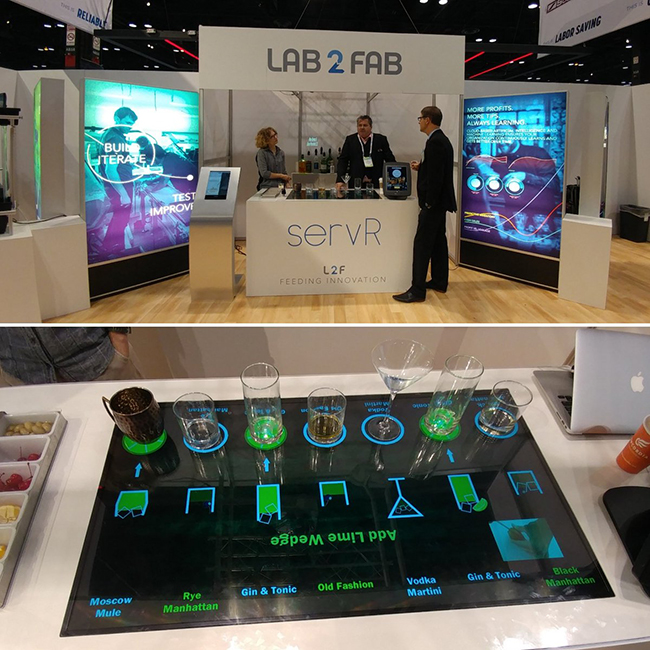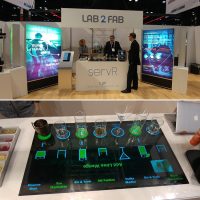With 37 facilities and close to 500 suppliers, Kellogg works with a large and diverse workforce. Over the years, the company has implemented several strategies to teach and reinforce good food safety practices. As a member of the Alliance to Stop Foodborne Illness, the company works with Stop to share what they have learned with fellow food industry professionals. We spoke with Sherry Brice, Chief Supply Chain Officer and former VP of Global Quality and Food Safety at WK Kellogg Company, and Vanessa Coffman, Ph.D., Alliance Program Director at Stop Foodborne Illness, to share their insights on training, rewards and free tools that can help food companies of all sizes enhance their food safety culture.
What are some of the strategies that Kellogg is using to strengthen its food safety culture?

Brice: Some of the things that Kellogg has implemented over the years—and every year we evolve—include a campaign called “Kellogg Food Safety Own It Every Day.” The campaign is about driving engagement at every level of the organization. We have behaviors that we expect of our employees at the frontline leadership level, the executive level and the management level. We provide training on engagement strategies to better articulate food safety culture, including the things they should recognize and how they should recognize them. We also do virtual reality trainings that help to educate our people. After education and engagement, the third pillar is recognition—recognizing and rewarding people around food safety culture.
Is food safety training part of all employee’s onboarding?
Brice: We do have onboarding for new employees. We also do quarterly and annual trainings, because doing it one time is not enough. You have to repeat, repeat, repeat. We have food safety videos that we have launched in partnership with Stop Foodborne Illness that include real life experiences and stories of people who have dealt with foodborne illness. These help team members internalize the training and personalize it, so they are thinking about the impact their actions have on the customers we serve every day. We use one of the videos for onboarding and also leverage them for our annual training and refresh trainings as well.
How did Stop Foodborne Illness get involved with Kellogg and what kind of resources are available for companies?

Coffman: Kellogg has been a member of the Alliance to Stop Foodborne Illness since 2021. We rely heavily on Sherry and her team’s insights in multiple work streams, one of which is the ever-growing video series that is posted to our food safety culture toolkit website, and these are all free and publicly available.
We created two customized videos with Kellogg, each featuring one of Stop’s constituent-advocates alongside a Kellogg executive. These remind employees why food safety is so important and emphasize the commitment that Kellogg has made to safe food. We’ve also worked together on gamified learning, leveraging some of the games that Kellogg uses in its training, and those can also be accessed in the toolkit that is free and publicly available.
Since Kellogg joined the Alliance, has that changed your training strategies or your recognition strategies?
Brice: Stop has given us access to their constituents, which really brings to life why food safety is so important at every level of the organization. Engagement with people who have been affected by foodborne illness is crucial to getting to the hearts and minds of employees, and emphasizing the importance what they do every day.
Since joining the Alliance, we have also added virtual reality to our trainings, starting with the most important one which is around sanitation. We created a virtual reality space where new employees—as part of onboarding—put the glasses on and go through our sanitation process. If you do not do the right step, it will not let you go forward. It’s a way to do hands-on training without having to actually be on the line.
The Alliance has been a great partner for Kellogg. It is an investment, but it is money well spent. When you hear the stories of their constituents, you cannot help but think, I never want a situation like that to be on my watch, what can I do to prevent this from happening?
Kellogg is a very large company. How do you ensure this training is happening and that you’re communicating a consistent message throughout the whole organization?
Ready to start improving your food safety culture? Join the Food Safety Culture Design Workshop on October 16, at the 2023 Food Safety Consortium.
Brice: We have a global quality council made up of members from regions around the globe. We all come together on that council to align and make sure we’re all on the same page in terms of what we are going to do to impact the broader organization, and then we disseminate that action out into the regions. This way, we ensure that we have the right ownership, and that everyone is clear on what needs to be done and how we’re going to do it. We also use the council to track and make sure that people are getting access to the videos and completing the training in the time that we have identified.
We created a toolbox tool that is crafted and geared toward Kellogg employees based on the region they’re in, and the council helps to disseminate that and then track that the work is being completed. We also incorporate this into our audit to make sure that people are internalizing the information and getting something out of it.
You mentioned training on engagement strategies, is that through role playing?
Brice: Yes, it really is about how to drive good behaviors, ownership, escalation and empowerment. If you’re a technician and you have to give feedback to a manager, that can really be intimidating, so we want to make sure we’re arming employees with the right tools. We do this in our training by simulating how to have these crucial conversations. If I go into a plant and I’m not following protocol, somebody is going to give me feedback, and I hope that they give it to me in the right way. We want to arm people with the knowledge on how to do that so that they’re comfortable giving that feedback no matter who they are.
Does Kellogg work with its suppliers to help train them as well?
Brice: We do work with our supply base and also our co-manufacturers (co-mans). Our co-mans get a lot of the same training that our plants get. We have an “owner” from the supplier management team that oversees each of the suppliers and that owner manages what training the supplier needs, depending on where that supplier is in their journey. We provide them with the toolbox from Stop, so they can leverage those resources. and we have found that very helpful because if that supplier has a great food safety culture that means we’re going to great materials. Likewise, if our co-mans have a great food safety culture then we feel more comfortable with what they’re producing for us.
In addition to the videos, what are some of the other ways that the Alliance to Stop Foodborne Illness partners with companies?
Coffman: The Alliance was formed in 2018, and we have worked with companies across the food system from farm to fork. We utilize the power of Stop Foodborne Illness constituents and their stories of foodborne Illness. These are people who survived a harrowing experience or the loved ones of those who did not. They will go onsite, take part in town halls, write down their stories and share them on our website, and they have also participated in the videos. We make customized videos for companies like Kellogg, and we’ve been able to leverage that content to create shorter videos that are more generic for the toolkit website.
We also work with companies to develop other materials. As Sherry mentioned, we have some gamified learning. People can download those games and tweak them to their own needs, and some of those have been provided by Kellogg. We’ve also been able to create communication plans based on the nearly 20 Alliance members’ experiences and food safety culture journeys, and we share those plans with the small and medium-sized companies at no cost.
Sherry mentioned recognition of employees, what are good ways to publicly recognize good work in protecting food safety?
Coffman: Like many aspects of food safety culture, it is going to be company dependent. You do want to solicit input from your employees before implementing a rewards program. For example, some people love employee of the month recognition, while others would rather not be publicly recognized. They would prefer a gift card or time off. If you go to our YouTube channel, you can watch some of our past webinars, including one on rewarding and recognition.
Brice: We implemented an “Achievers” platform. Through the platform, we give points to employees and those points can be used to purchase items. We also do on the spot recognition and recognition dinners. It depends on the situation and the person, but “Achievers” is our main recognition platform because we have found that our employees like this. They can trade their points in for a gift card, a T-shirt, a vacuum cleaner—there are many different things on the platform.
It is often said that every company has a food safety culture whether positive or negative, how do you go about assessing where you’re at to understand what you need to implement?
Brice: You can do this through surveys and small group sessions. Asking open-ended questions so people can provide content that helps you understand truly where you’re at and listening are important. Anonymous surveys maybe the best place to start because people may not be very open to speaking up during a small groups. The surveys help you understand where you’re at and what areas do you need to focus on first. Stepping back and looking at what’s happening every day in the company will also give you an understanding of where your company is. How do people feel about stopping a line if they see an issue? Are they comfortable speaking up?
Coffman: Assessment isn’t a one-size-fits-all approach. It has to be carefully thought out and will vary from company to company and even from location to location within the same company. I would like to add that assessment without action is fruitless. If you put forth the time and effort to collect and analyze data, you must take action.
Once you’ve done your assessment and are ready to improve your food safety culture, what are some of the steps you can take to get started?
Coffman: We have a page on our toolkit website dedicated to this, and it leverages learning from our 20 Alliance members from across the industry, looking at both the successes and the bumps they’ve encountered. It is going to look different for each company so I encourage everyone to go to the toolkit website and look at the Plan Your Journey tab.
Brice: The best plan includes people from all areas of the organization. You don’t want just the manufacturing base or the managers, you need to understand why people have the behaviors they have today and what needs to change. If all employees or departments feel that they have ownership in the plan, then the plan will come to fruition faster, and you’ll also create food safety champions along the way.









